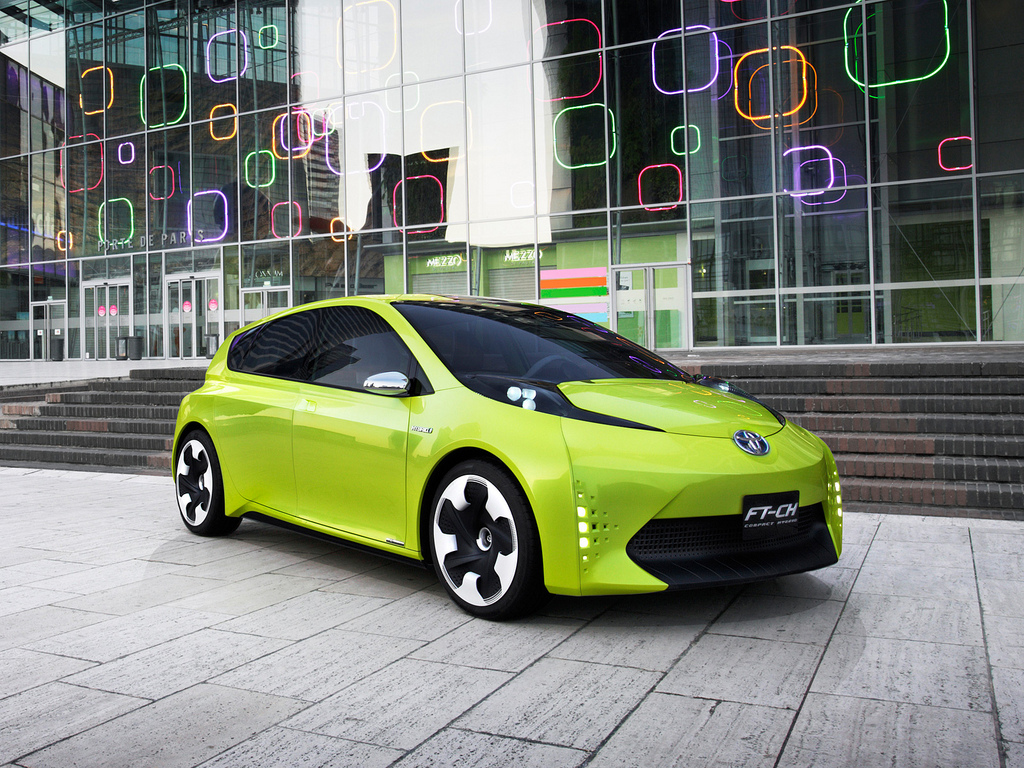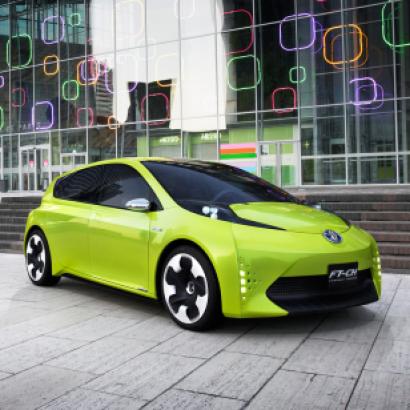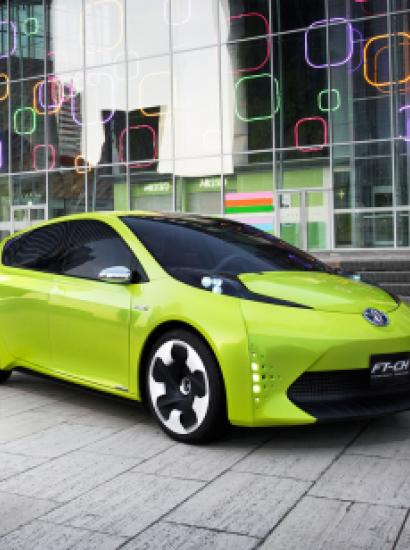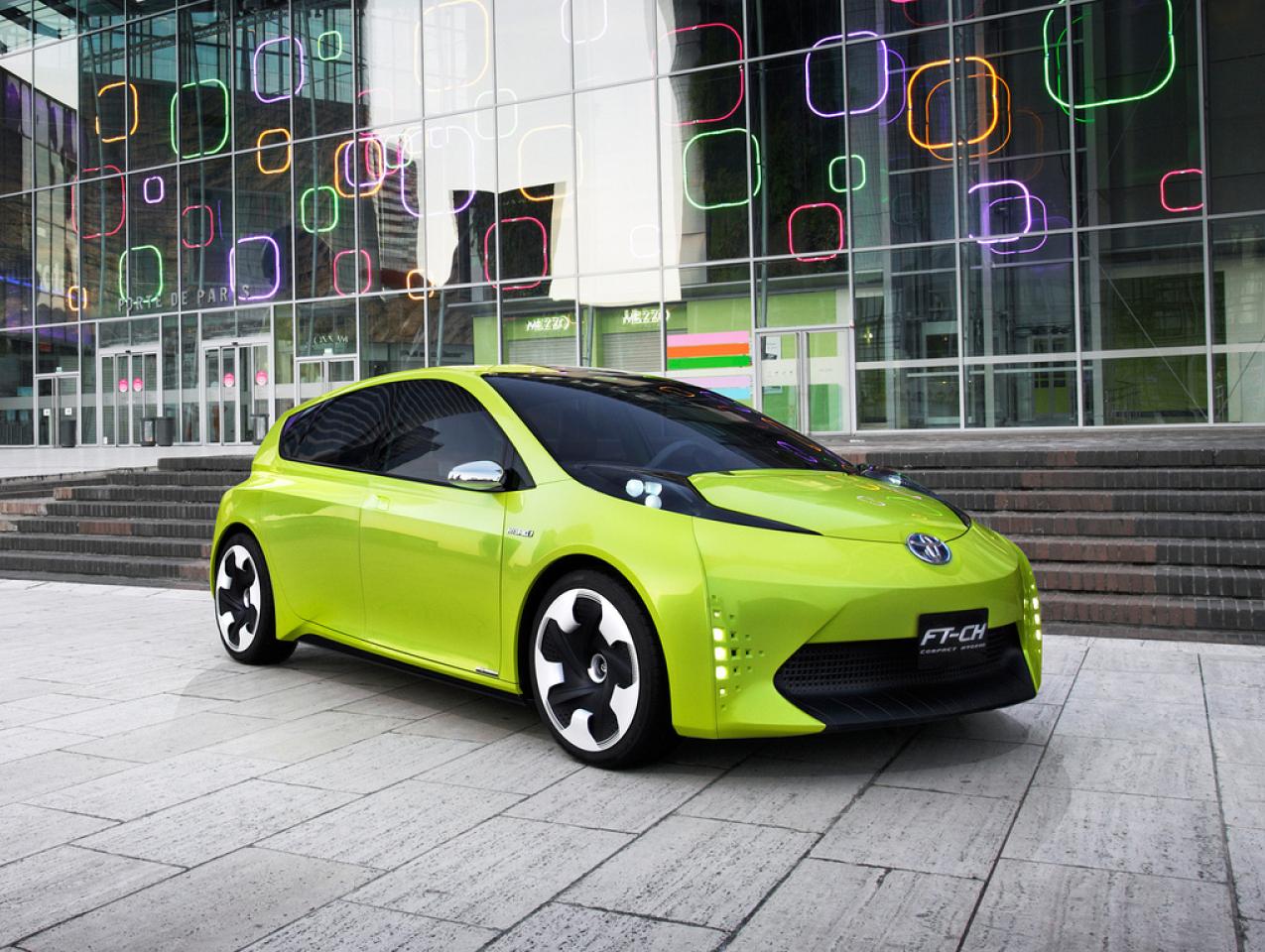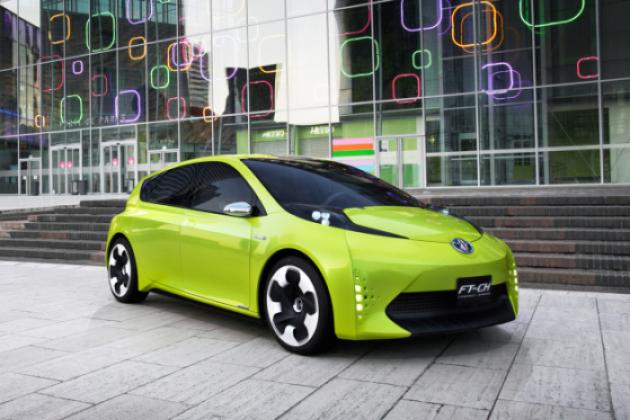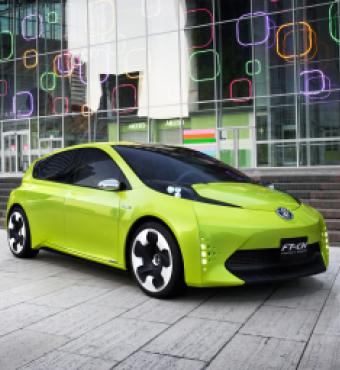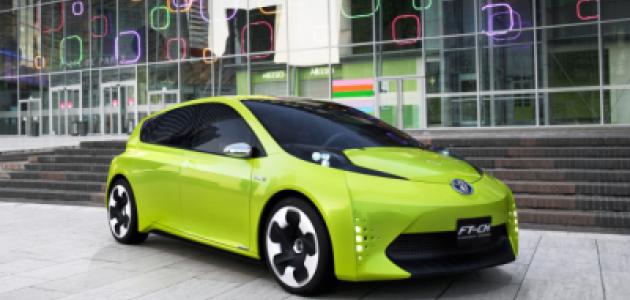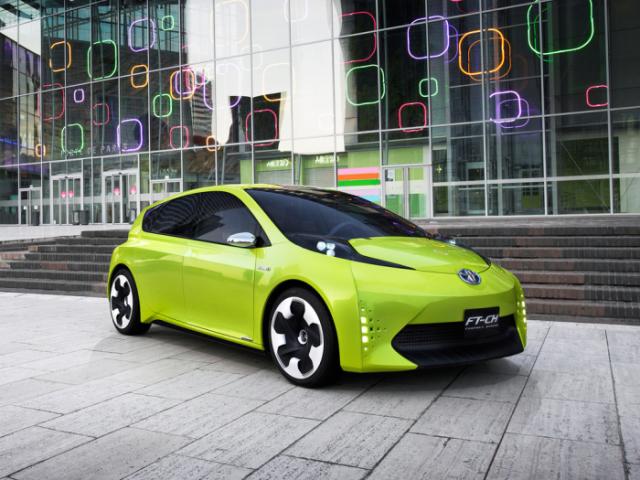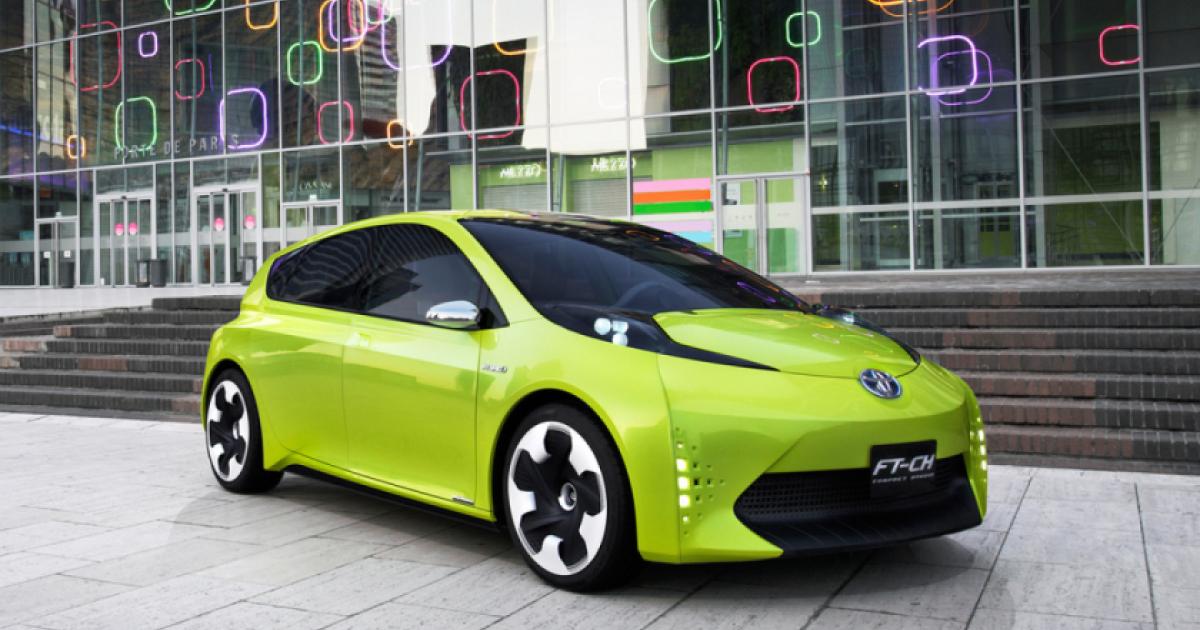- Energy & Environment
Editor's note: The following is an excerpt from the Hoover Press book Game Changers: Energy on the Move, edited by George P. Shultz and Robert C. Armstrong.
Moderating US oil consumption remains a high priority for security, economic, and environmental reasons. Seventy percent of US oil consumption is used for transport, and the International Energy Agency estimates that the US transport sector’s per capita liquid fuel consumption is the highest in the Organization for Economic Cooperation and Development (OECD), easily exceeding second-place Canada. In fact, 27 percent of all global transport energy use occurs in the United States. At the same time, mobility is a key enabler of the country’s economy and so numerous R&D efforts in universities and industry are aimed at displacing the role of oil in this sector.
Students and faculty at universities around the country are devoting their efforts to finding innovative solutions for finding affordable, cleaner, more flexible, and resilient transportation options. Mechanical engineers, chemical engineers, electrical engineers, materials scientists, biologists, chemists, physicists—all working together, employing and pushing the frontiers of a whole new generation of scientific inquiry based on the idea of atomic and molecular level design, synthesis and characterization of materials and processes for energy conversion and supply.
—Sally Benson, Stanford Global Climate and Energy Project director and professor of energy resources engineering
Using less oil—or none at all—to get where we want to go is certainly not a new idea, but the options to do so today are better and the necessary tradeoffs are smaller than ever before. On the one hand, passenger vehicles are undergoing significant efficiency improvements, and this is expected to continue over the next decade as fuel economy requirements increase. More efficient internal combustion engines are one part of the story, for example the development of smaller-displacement turbocharged engines coupled to more versatile transmissions. This is complemented by alternative drivetrains—conventional gasoline--electric hybrids in particular—and vehicle envelope improvements, such as light-weighting and aerodynamic design. Our increasingly efficient vehicle fleet already helps to insulate US drivers from fluctuating oil prices and improves the amount of personal mobility available per dollar spent. And local emissions have never been better—today’s “super ultra low emission vehicles” with modern gasoline drivetrains emit roughly 90 percent less pollution than the average new vehicle sold in 2003.
If you look at diesels, their efficiencies are in the low forties now. Actually, there are things coming out of what’s called “homogenous charge compression ignition,” or HCCI—the next generation beyond HCCI—which have indicated efficiencies approaching 55 percent now. And those technologies will fit into relatively conventional piston-cylinder geometries—very highly turbo charged. . . . Efficiencies are way up, on the move.
—Chris Edwards, Stanford professor of mechanical engineering
|
AVAILABLE TODAY: MIT’s carbon nanotube enhanced‑ultracapacitor Ultracapacitors are a promising energy storage device. They deliver energy quickly, can be recharged in seconds, and have a long life span—but their energy-storage capacity is limited. In 2004, MIT’s Joel Schindall, B. Gordon professor of the practice, electrical engineering and computer science, proposed a solution to that problem: instead of using activated charcoal, coat the ultracapacitor electrodes with vertically aligned carbon nanotubes. A tightly packed array of tall, thin nanotubes on the electrode could provide lots of surface area for critical charged particles called ions to cling to. The nanotube “forest” would provide straight pathways so the ions could come in and out easily and pack together neatly—like sucking up paint with a paintbrush rather than a sponge. Early work at MIT on prototype devices showed that the new ultracapacitor could store energy, but the demonstration devices were each the size of a thumbnail and could charge and discharge only tiny amounts of energy. After years of refining the technology, in 2008, Riccardo Signorelli, MIT PhD ‘09, cofounded FastCAP Systems, a company aimed at commercializing the nanotube-enhanced capacitor along with systems to enable its practical implementation. The company has twenty-five employees and recently sold and shipped its first generation of products. Their latest ultracapacitor stores twice as much energy as conventional alternatives and delivers seven to fifteen times more power. It also costs less and uses raw materials that are both inexpensive and abundant within the United States. While the new ultracapacitor has potential applications in many fields, the immediate focus is on transportation. For example, in a hybrid-electric vehicle, an ultracapacitor could provide power for rapid acceleration and deceleration and instant discharging and charging—a million or more times over the lifetime of the vehicle. “Most people don’t associate the word ‘hybrid’ with a high-performance vehicle, but our ultracapacitors could change that,” says Signorelli. Credit: Nancy Stauffer, ©Massachusetts Institute of Technology, used with permission (MIT Energy Initiative “A Novel Ultracapacitor,” October 9, 2012) |
|
AVAILABLE TODAY: Lithium-ion batteries in mobile electronics and plug-in electric vehicles Lithium-ion batteries are the workhorses of modern consumer electronics. You probably have two or three within arm’s reach right now. And they have found surprising early uptake in plug-in or even full-electric vehicles such as the Tesla Model S, which uses thousands of them in massive under-floor battery packs. The lithium-ion battery’s ubiquity today is the result of early breakthroughs in industry and academia, followed by decades of gradual refinements on commercial production lines. Their origin can be traced to 1974, when Stan Whittingham traded his postdoctorate research role in professor Robert Huggins’s material science lab at Stanford for one at the Exxon Corporation. There, working with a research team interested in superconductivity, Whittingham found that they could effectively shuttle miniscule lithium ions carrying a small electric charge in and out of a structured titanium sulfide electrode. The result of this process, called intercalation, was one of the first demonstrated modern rechargeable lithium batteries. Later, in 1980, John Goodenough at Oxford observed that lithium ions could be removed from a compound of lithium cobalt oxide. Concurrently, a research team at the Grenoble Institute of Technology and related work at Bell Labs showed that lithium could be inserted into layers of carbon. Together, these two -breakthroughs—a positive lithium cobalt oxide electrode and a negative carbon-based anode—while essentially reversing the Exxon design, suggested a new, coherent battery architecture. By 1985, Akira Yoshino of Japan’s Asahi Kasei Corporation used these concepts to demonstrate a feasible (and safe) commercial prototype. And in 1990, Sony revealed their own surprise: a consumer camcorder powered by a lithium-ion battery. These were the first to achieve manufacturability, which would gradually pull down the price, and improve the performance, over the decades to come. |
So beyond simply improving fuel efficiency, we are now seeing advances in the technological performance and commercialization of full-electric cars that would have seemed impossible just a decade ago. Lithium-ion batteries in particular have been at the top of the government’s research agenda. Conveniently, many of the advances in that technology can be shared with the high-volume, high-value consumer electronics, such as iPhones. Costs have come down significantly, but still have quite a way to go for large-scale penetration of the automotive market for -vehicles with long-range driving without recharge.
For example, numerous full-electric or plug-in electric sedans now compete directly with gasoline-powered alternatives at different price points. One major advantage of full-electric drivetrains is their various mechanical simplicities compared to conventional gasoline vehicles, including far fewer moving parts. But because so many batteries are needed to power vehicles over a reasonable range—say, anywhere from 25 to 85 kilowatt-hours for a range of 80 to 300 miles—electric vehicles on the market today using even the best cost-performance battery options still command an upfront price premium of about $15,000 to $20,000 before federal or state subsidies. And while cutting-edge battery designs continue to evolve quickly in the lab, keeping up with the pace of that technological change is a major challenge to upstart cell manufacturers looking to profitably commercialize such products quickly and at scale. Improved mobile storage technology is therefore key to the successful electrification of -transportation—in particular, higher specific energy or energy density batteries to increase the range of vehicles and reduce costs.
Over the last ten years, lithium-ion batteries went from a portable device technology, to not only a transportation technology, but also a grid technology. That was all driven by R&D. At the same time, the price of lithium-ion was reduced from $2,000 a kilowatt-hour to $300, which was also driven by R&D. So what are the goals? A 3x increase in energy density along with a 3x decrease in costs. That is game changing—at that point, it will become widely adoptable.
—Yet-Ming Chiang, MIT professor of materials science and engineering
Relatively little attention was paid to vehicle batteries specifically, especially at the basic science level, until about ten years ago, and today’s researchers report that significant funding did not start flowing into related R&D until about five years ago. Since then, contrary to the pronouncements of skeptics, progress on mobile battery technology has actually been very good. Of course, it may not have kept up with the breathtaking pace of microchip processing power advancements, but Moore’s Law is a heady standard by any measure. For example, in just the past few years, energy density in commercially deployed vehicle batteries has improved from approximately 100 watt-hours per kilogram in the A123-type batteries shipped in the Fisker Karma to approximately 200 watt-hours per kilogram for those used in the Chevy Volt, and even breaking 250 watt-hours in the Tesla Model S. Startup companies are now testing mobile batteries at ranges of 300–400 watt-hours per kilogram and over 1000 watt-hours per liter of volume. Battery manufacturing costs for the Chevy Volt were approximately $1,000 per kilowatt-hour capacity in 2008; manufacturing costs for the same battery had fallen to $500 per kilowatt-hour in 2012. Tesla Motors now claims costs of closer to $300 per kilowatt-hour for its simplified battery pack designs, with the generic lithium-ion cells supplied by Panasonic. Cost reductions in the deployment of such vehicle batteries have significantly benefited from the manufacturing scale offered by the existing mature market for similar consumer electronic batteries.
A change in the processing can make a profound difference in the properties of the materials, the properties of the devices, and also the way in which they’re used. Sony in the 1990s, with the introduction of the lithium-ion battery, disrupted the industry by doubling energy density and fundamentally changing the way they were manufactured. A game-changing battery technology both in consumer electronics and auto and later in grid storage will require rethinking manufacturing platforms—that is certainly the case with our solid-state technology.
—Ann Marie Sastry, Sakti3 president and CEO
Current research goals are to improve mobile battery energy density by two to five times, reduce costs per kilowatt-hour by three to five times, and improve cycle and calendar life while ensuring safety. Improvements of this scale represent a substantial research challenge. Potential game-changing technologies include the development of electrode materials to replace the graphite generally used today in order to increase storage capacity. Options include high-capacity nanosilicon anodes and sulfur, or even air-based, cathodes. Early advances in the lab suggest that combining these approaches, while effectively stabilizing the chemical degradation that can go alongside them, may yield capacity improvements of up to four times over existing lithium-ion technologies. Meanwhile, some researchers expect that entirely different chemistries will be needed to meet the necessary price points. Overall, a strong research focus on mobile storage is warranted, for both novel materials (such as nanostructured and solid-state materials) and novel manufacturing approaches (including synthetic routes to materials fabrication and fabrication of devices at scale).
Five years ago, we started work on silicon battery chemistries and they kept saying silicon doesn’t work. It’s not possible. After five years of continuous research and pumping a lot of ideas into this area, its looks like it has become possible. When I look at this, I get very excited because it’s so difficult to solve.
—Yi Cui, Stanford David Filo and Jerry Yang faculty scholar,
associate professor in materials science and engineering
|
NEAR AT HAND: Stanford’s silicon nanoparticle and hydrogel lithium ion batteries Stanford University scientists have dramatically improved the performance of lithium-ion batteries by creating novel electrodes made of silicon and conducting polymer hydrogel, a spongy material similar to that used in contact lenses and other household products. “We’ve been trying to develop silicon-based electrodes for high-capacity lithium-ion batteries for several years,” says Stanford associate professor Yi Cui. “Silicon has ten times the charge storage capacity of carbon, the conventional material used in lithium-ion electrodes. The problem is that silicon expands and breaks.” Studies have shown that silicon particles can undergo a 400 percent volume expansion when combined with lithium. When the battery is charged or discharged, the bloated particles tend to fracture and lose electrical contact. To overcome these technical constraints, a Stanford team used a fabrication technique called in situ synthesis polymerization that coats the silicon nanoparticles within the conducting hydrogel. Using a scanning electron microscope, the scientists discovered that the porous hydrogel matrix is riddled with empty spaces that allow the silicon nanoparticles to expand when lithium is inserted. This matrix also forms a three-dimensional network that creates an electronically conducting pathway during charging and discharging. Although a number of technical issues remain, Cui is optimistic about potential commercial applications of the new technique to create electrodes made of silicon and other materials. “The electrode fabrication process used in the study is compatible with existing battery manufacturing technology,” he said. “Silicon and hydrogel are also inexpensive and widely available. These factors could allow high-performance silicon-composite electrodes to be scaled up for manufacturing the next generation of lithium-ion batteries. It’s a very simple approach that’s led to a very powerful result.” Credit: Mark Shwartz for the Stanford Precourt Institute for Energy (“Stanford Scientists Create Novel Silicon Electrodes That Improve |
|
NEAR AT HAND: UT Austin’s long-life carbon paper lithium-sulfur cells The current lithium-ion technology based on lithium-insertion compound electrodes is limited in energy power and density. Sulfur offers an order of magnitude higher energy-storage capacity than the currently used lithium-insertion compound cathodes. Unfortunately, several challenges prevent the use of sulfur cathodes in practical cells. These challenges include low electrochemical utilization of sulfur and poor cycle life. The low electrochemical utilization of sulfur is due to the high resistivity of sulfur and the discharged products. The poor cycle life of sulfur cathodes is due to the dissolution of sulfur as intermediate polysulfides into the electrolyte and the consequent poisoning of the metallic lithium anode by the dissolved polysulfide species. Professor Arumugam Manthiram at the University of Texas has demonstrated a novel cell configuration that overcomes the challenges and offers long-life lithium-sulfur cells with high energy and power. The new cell configuration involves the insertion of an electrolyte-permeable carbon paper between the separator and the regular sulfur cathode. The carbon paper serves as a bifunctional interlayer: Acting as a second current collector, it decreases the resistance of the sulfur electrode and facilitates the absorption and retention of the soluble polysulfide species. This novel approach not only simplifies the processing without requiring elaborate synthesis of composites and surface chemistry modification, but also enhances the charge-discharge rate by facilitating fast electron flow. With the carbon interlayer, lithium-sulfur cells exhibit high energy with a long cycle life. The new cell configuration with the carbon paper interlayer has the potential to increase the energy density of the packaged cells by two to three times compared to the current lithium-ion technology. Credit: Carey W. King for the University of Texas Austin Energy Institute |
|
NEAR AT HAND: MIT’s carbon nanofiber high-density lithium-air battery MIT researchers have found a way to improve the energy density of lithium-air (or lithium-oxygen) batteries, producing a device that could potentially pack several times more energy per pound than today’s ubiquitous lithium-ion batteries. The team created a carbon fiber-based electrode that is substantially more porous than other carbon electrodes. It can therefore more efficiently capture the oxygen from air flowing through the system and store it as solid oxidized lithium within its pores as the battery discharges. “We grow vertically aligned arrays of carbon nanofibers using a chemical vapor deposition process. These carpet-like arrays provide a highly conductive, low-density scaffold for energy storage,” explains former MIT graduate student Robert Mitchell. The gravimetric energy stored by these electrodes—the amount of power they can store for a given weight—“is among the highest values reported to date, which shows that tuning the carbon structure is a promising route for increasing the energy density of lithium-air batteries,” says former MIT graduate student Betar Gallant. The result is an electrode that can store four times as much energy for its weight as present lithium-ion battery electrodes. In a paper published in 2010, the team had estimated the kinds of improvement in gravimetric efficiency that might be achieved with lithium-air batteries; this new work “realizes this gravimetric gain,” says MIT mechanical engineering professor Yang -Shao-Horn. Further work is still needed to translate these basic laboratory advances into a practical commercial product, she cautions. Credit: David Chandler, ©Massachusetts Institute of Technology, used with permission (MIT News Office “Research Update: Improving Batteries’ Energy Storage,” July 25, 2011) |
|
NEAR AT HAND: Berkeley’s rechargeable, flexible zinc batteries A University of California, Berkeley graduate student has resurrected a largely ignored battery chemistry in an effort to create a new class of low-cost and safe energy storage devices that could be an alternative to ubiquitous lithium-ion technology. Zinc batteries are nothing new to material scientists—think off-brand disposable AAs—but Christine Ho’s breakthrough in electrolyte design prevents formation of undesirable dendrites on the battery’s zinc electrode. In conventional zinc chemistries, this buildup is so severe as to limit their use to a single discharge. In Ho’s battery, the liquid electrolyte is replaced with a plastic-like yet electrically conductive gel polymer film that shuttles ions between its zinc and manganese dioxide electrodes more than 200 times. In short: this is a rechargeable device that could give zinc batteries a life beyond the trash can. Though the technology’s energy density is lower than some -leading-edge lithium-ion chemistries—130 watt-hours per kilogram in early lab estimates—it has other tricks up its sleeve. Just 100 microns thick, the zinc cell is flexible. Nonreactive and -nonvolatile—that is, safer—it could conceivably be integrated into final products without bulky protective packaging. And the battery is also printable, which could keep down manufacturing and material cost at scale. While completing her doctorate, Ho joined with classmates to showcase their zinc technology in university business plan competitions. Their winnings provided enough for capital for basic prototype demonstration and the team has since formed a startup they call Imprint Energy to further push development of their innovations. Initial target markets are consumer electronics and biomedical, though the concept could be applied more broadly as well, for example, in automobiles. |
|
NEAR AT HAND: University of Michigan’s vanadium nitride supercapacitors University of Michigan researcher Levi Thompson and his team are pairing a traditional technology with a modern workaround—the humble lead-acid battery commonly found in golf carts and electric bikes (and yes, in traditional cars) paired with a next--generation supercapacitor. Batteries work like a watering can—they can hold a lot of energy, but they cannot pour it out quickly. By comparison, a supercapacitor is like a water tumbler—it can fill or empty much more quickly than a battery. According to Thompson, a professor in the University of Michigan Department of Chemical Engineering, a next-generation supercapacitor paired with a lead-acid battery could equal a tenfold cost savings on electric cars for automakers and consumers as compared with the lithium-ion batteries currently in use. Through his company Inmatech, Thompson aims to double the energy density of the current generation of supercapacitors while dramatically reducing the cost. The group has recently completed a five-inch cubic prototype device packed with vanadium nitride—a compound with lots of structural surface area ideal for energy storage. Inmatech’s six employees will soon test the effectiveness of their invention by partnering with manufacturers of electric bikes and scooters before exploring the manufacture of automotive versions. Other commercial applications for the technology could include memory backup in mobile phones and use in uninterruptible power supplies. There is also potential in smart-grid energy storage, as well as in extended range vehicles and electromagnetic armor for military purposes. Credit: Amy Mast for the University of Michigan Energy Institute |
Into the future, revolutions in vehicle automation and networking hold the promise to transform freight and personal road transport, reducing both congestion and energy use for whatever fuel system is used. Variations on advanced vehicle sensing of the environment and automated technologies range from incremental additions to driver abilities—such as adaptive cruise control, stop-and-go traffic management, or lane departure control—all the way to full vehicle autonomy.
Most compellingly, many such technologies could both reduce overall vehicle energy use and offer other more immediate consumer-facing benefits. For example, automated parking capability within an urban area would save time and fuel while reducing curb-side pollution and even cutting down on the significant urban road congestion caused by drivers circling for available parking spaces. Similarly, to the extent that active safety automation reduces the number of vehicle crashes, manufacturers could rely less on passive safety mechanisms such as airbags or steel safety cages—in effect, making vehicles much lighter. This could both dramatically improve vehicle energy efficiency and over time mitigate the ongoing global rise in highway mortality; already 1.3 million people are killed each year in road accidents and an additional 20 to 50 million people are injured according to the World Health Organization. Some of these technologies have grown out of military-sponsored university research—for example, the well-known “DARPA challenges”—and are in early testing stages by vehicle manufacturers and third-party parts suppliers. Considerable work remains, though, in proving this technology’s flexibility and safety, along with establishing both legal frameworks and user norms.
|
ON THE HORIZON: Stanford’s improved highway-vehicle induction charge system A Stanford University research team has designed a high-efficiency charging system that uses magnetic fields to wirelessly transmit large electric currents between metal coils placed several feet apart. The long-term goal of the research is to develop an all-electric highway that wirelessly charges cars and trucks as they cruise down the road. The wireless power transfer is based on a technology called magnetic resonance coupling. Two copper coils are tuned to resonate at the same natural frequency—like two wine glasses that vibrate when a specific note is sung. The coils are placed a few feet apart. One coil is connected to an electric current, which generates a magnetic field that causes the second coil to resonate. This magnetic resonance results in the invisible transfer of electric energy through the air from the first coil to the receiving coil. In 2007, MIT physics professors Marin Soljacic, John Joannopoulos, and Peter Fisher used magnetic resonance to light a 60-watt bulb. The experiment demonstrated that power could be transferred between two stationary coils about six feet apart, even when humans and other obstacles are placed in between. Stanford professor Shanhui Fan and his colleagues wondered if the MIT system could be modified to transfer 10 kilowatts of electric power over a distance of 6.5 feet—enough to charge a car moving at highway speeds. The car battery would provide an additional boost for acceleration or uphill driving. Fan and his colleagues recently filed a patent application for their wireless system. The next step is to test it in the laboratory and eventually try it out in real driving conditions. “You can very reliably use these computer simulations to predict how a real device would behave,” says Fan. Credit: Mark Shwartz for the Stanford Precourt Institute for Energy (“Wireless Power Could Revolutionize Highway Transportation, Stanford Researchers Say,” February 1, 2012, in the Stanford Report) |
|
ON THE HORIZON: University of Michigan’s driverless vehicle test bed By 2021, Ann Arbor, Michigan, could become the first US city with a shared fleet of networked, driverless vehicles. That is the goal of the Mobility Transformation Center (MTC), a cross-campus University of Michigan initiative that also involves government and industry representatives. “We want to demonstrate fully driverless vehicles operating within the whole infrastructure of the city within an eight-year timeline and to show that these can be safe, effective, and commercially successful,” says University of Michigan’s Peter Sweatman. The center involves researchers from all over the university, including urban planning, energy technology, information technology, policy, and social sciences. Occupying 30 acres, the MTC is constructing a test environment that will include approximately three lane-miles of roads with intersections, traffic signs and signals, sidewalks, benches, simulated buildings, street lights, and obstacles such as construction barriers. “Connected and automated vehicles provide a new platform for safety improvements, better traffic movement, emissions reduction, energy conservation, and maximized transportation accessibility,” Sweatman says. “The new facility will help the MTC accelerate and integrate innovations that will lead to a commercially viable automated mobility system that will fundamentally transform mobility in our society.” U-M has also recently implemented the world’s largest on-road vehicle-to-vehicle and vehicle-to-infrastructure model deployment in Ann Arbor, with more than 3,000 users. This project, which includes several industry participants, provides data to inform future policy decisions by the US Department of Transportation. Credit: Amy Mast for the University of Michigan Energy Institute |







